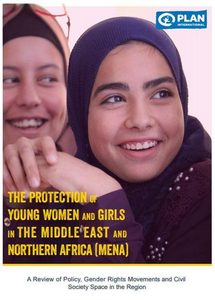The protection of young women and girls in the Middle East and Northern Africa: A review of policy, gender rights movements and civil society space in the region.

Women and girls in the Middle East and North Africa (MENA) are among the most vulnerable populations in the world.
The region ranks lowest on the Global Gender Index (GGI) scoring minimally on indicators on health, education, economic, and political participation. The context is precarious for young women and impedes girls’ full enjoyment of their rights and freedoms. With 1 in 3 women in MENA having experienced or at risk of experiencing physical or sexual abuse in their lifetime, Gender-based violence (GBV) is the most common rights violation experienced by women and girls in the region .
In Lebanon and Jordan for example, following the COVID-19 pandemic, there is a reported increase in abuse and violence against women , as well as a spike in reports of domestic violence.
Conservative political regimes and contradictory legal and policy systems at national and regional levels are an obstacle to the protection of women and girls in MENA. While national constitutions provide for equality of all citizens, 4 out of 5 countries analysed have loopholes that hinder young women and adolescent girls from fully accessing and enjoying their rights.
Furthermore, predominantly sectarian systems of governance that are captured by elites and religious leaders, alongside civil wars and regional conflicts that affect and impact several countries in MENA represent obstacles to enhancing legal and policy measures to protect women and girls in the region. Furthermore, the lack of local and national policies to prevent and address rights violations, and cultural and religious barriers, have contributed to increased challenges to addressing gender rights violations .
Driven by the ambition to advance children’s rights and the equality of girls in countries in the MENA region, Plan international is concerned that within this policy and rights activism environment, adolescent girls and young women in MENA are facing multiple threats to their protection, each contributing to exacerbating the other; exposure to weak legal and policy protections, limited access to protection services, and persistent cultural and social barriers.
To review the protection afforded to girls and women, this analysis focused on 5 countries in MENA: Lebanon, Sudan, Egypt, Syria, and Jordan. Despite the level of conflict and instability in the country, the displacement of Syrian refugee women and girls into countries in the region warrants its inclusion in this analysis.
Download options
report (english)
23.40 mb
report (arabic)
22.12 mb
Categories: Protection from violence


